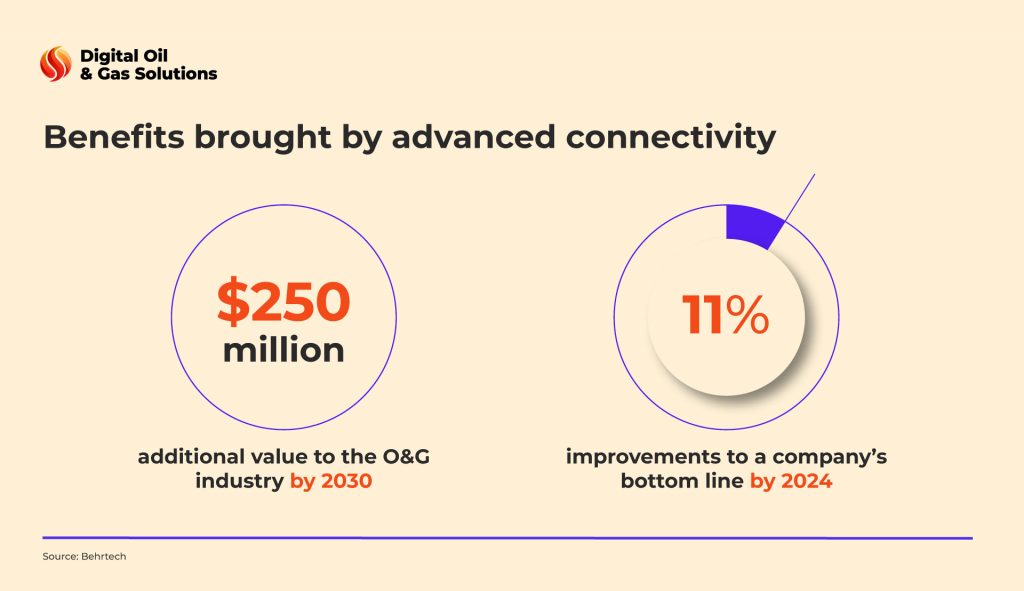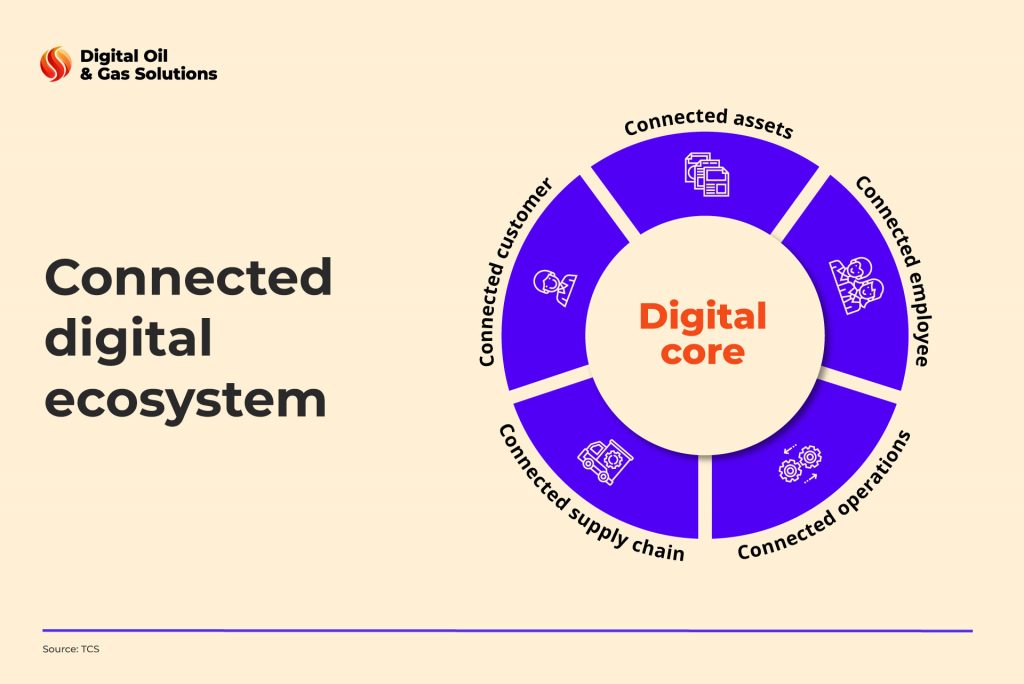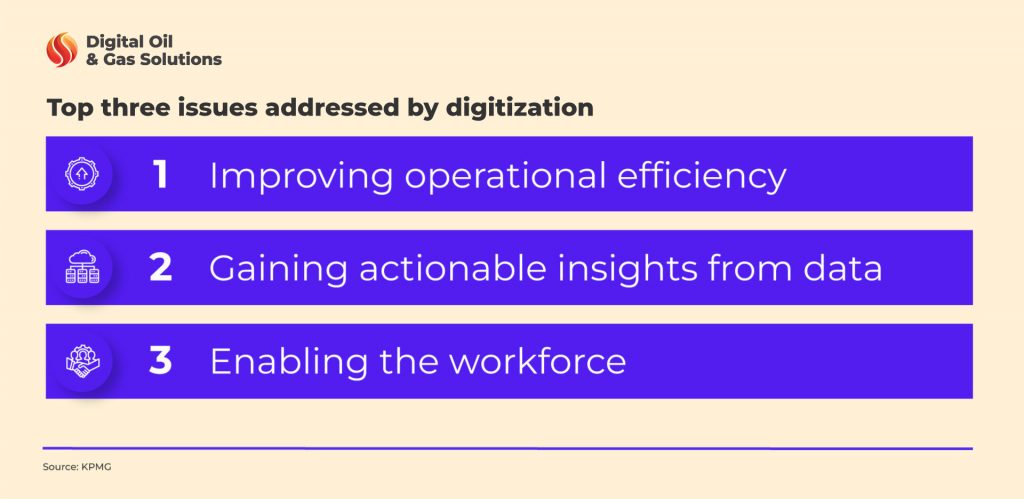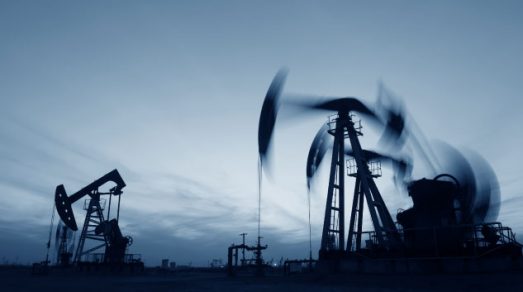Altogether, this combo contributes to the shift towards Business 4.0—the digital transformation of all industries related to manufacturing and production.
IoT as a key to Industry 4.0
Today’s business environment is evolving towards the Industry 4.0 model, requiring operational improvements of the whole value chain, cost minimization, and data-driven decision-making. The O&G industry is no exception. To achieve operational efficiency, companies need vast amounts of data. It all starts with real-time data collection. Instead of manual data input and processing, companies leverage the internet of things in oil and gas. As a result, the IoT oil and gas market is expected to reach $43.48 billion by 2024.
The benefits of IoT for oil and gas include:
- prevention of errors and emergencies
- predictive maintenance of field assets
- improved employee safety
- increased industry predictability
- environmental sustainability
Seventy-two percent of these benefits are derived from cost reduction, which is crucial in the current business landscape with its volatile prices. Here are some numbers showing how oil companies benefit from digitization.

The thing is that connectivity is not limited to data collection itself. It also assumes that digitization in oil and gas covers process automation, data transition and management. To build such a complex ecosystem, companies should wisely plan each step.
A systematic approach to digitization in oil and gas industry
In 2021, 29 percent of the O&G industry leaders named digital strategy as their top priority. “Strategy” is a keyword here, as more and more executives understand that digitalization requires a comprehensive approach that covers all units of the value chain. Therefore, executives should consider all aspects, from employees to operations, to incorporate them into an ecosystem. Then choose technologies that cover each of these aspects correspondingly.

Let’s go through it step by step and see how you can approach a digital foundation for your business in practice.
1. Connecting assets
It all starts with installing smart sensors across your sites. The number of sensors depends on the number of assets and the extent of automation you are aiming to achieve at the current stage of business development. For example, sensors installed on wells and meters will help you set up alerts, implement predictive maintenance, and generate automated reports. If you want to automate liquid transfer as well, you will need additional sensors for tanks that indicate the level of oil or water as well as the liquid type.
How do you choose where to start? Consider your short-term objectives and budget, then compare it to the value brought by each solution based on your company’s current process arrangements. You can also rely on the expertise of dedicated professionals with years of field experience to analyze your situation and give you the best options.
In each case, smart sensors and edge connectivity will unleash new opportunities for your business and enable you to move forward in terms of oil and gas digitization. Precisely speaking, once you have connected sensors, you can use intelligent devices for remote control and decision-making. But it’s only possible when your employees know how to use them effectively, which leads us to the next step.
2. Upskilling employees
46 percent of companies complain that their current workforce skills are not enough to pay off their investment in digital technologies. Indeed, there’s no value in IoT for oil and gas unless your field employees know how to collect data from them, and your management can use all this information to smooth processes and workflows.
So, what should you do? According to this EY survey, 27 percent of companies retrain existing employees and 54 percent plan to do so in the near future. Employee training itself should be regular and based on a pre-scheduled program that covers both theoretical and practical areas. Theoretical lessons should explain how digitization in oil and gas works and cultivate the habit of using digital tools. These lessons should also cover such topics as cyber accuracy and security.
Practical training usually models field environments, allowing employees to learn how to perform various tasks using digital tools. For example, how to complete onsite inspections using field data capture apps, how to react to emergency alarms provided by AI based on sensor data, or how to deal with cyber threats.
3. Setting up data management
Data acquisition brings you just halfway to success. The next and more important step is how you leverage this data. Advanced data analytics requires clear governance and effective cloud computing tools that will help you store and manage data while reducing infrastructure costs and getting the most of your connectivity potential.
First, create a single source of truth (SSOT) where all employees can check on their responsibilities, access levels, and policies. Make sure field employees know what kind of data they must input and what tools to use. Likewise, all managers and board members need to know where to look for data and who is in charge of providing it on time.
Finally, there must be predefined penalties in case something goes wrong. Such straightforward management is a prerequisite for effective data strategy so that acquired data doesn’t just sit in the interface collecting dust but is used and becomes a foundation for further process improvements.
4. Optimizing operations with IoT in oil and gas
Businesses consider operational efficiency one of their top priorities while implementing IoT in oil and gas, and the foundation of achieving this and other priorities is comprehensive data management.

Advanced data analytics will show you the gaps and bottlenecks in your processes. Based on these insights, you can plan investments in process automation and orchestration, review how much time field workers spend on what assets, and plan how to optimize their workload. With data from field assets being available in real-time, you can track which assets need employees’ immediate attention so that they can make the necessary fixes instead of spending time inspecting all locations.
Therefore, you get two major operational benefits from IoT in oil and gas: first, it increases employee safety as they do not constantly subject themselves to dangerous environments; second, it helps save costs due to fewer investments in maintenance-related activities. Once these activities are automated, they become cheaper than while performed by human workers. In addition, predictive maintenance also reduces spending on emergency coverage as it prevents accidents from happening in the first place.
5. Optimizing the supply chain
When you find the right approach to data management and process optimization, make sure that each unit of your value chain sticks to these improvements. It’s vital to create a multi-level structure of data transition to shorten decision-making cycles across all units. This assumes using edge connectivity, wearables and smart devices to track all production activities data and store it within trusted cloud computing oil and gas tools for analysis and making predictions.
6. Connecting customers
The best way to ensure your connected foundation works is to compare your production with the demand coming from your customers. Once they are balanced, it means your efforts and investments have paid off their value.
But how do you find this balance? Measuring consumption with IoT in oil and gas is the best option. Identifying high and low seasons and matching them with production will help you forecast the maximum profit and not overspend on production. On the other hand, the market can be pretty unpredictable. Keeping this in mind, it makes sense to automatically track consumers’ activity and analyze it with AI to quickly react to changes.
Conclusion
As you can see, digitization in oil and gas industry requires taking consistent steps towards an ecosystem where each unit is balanced with the others. This is achievable with the help of timely obtained and analyzed data from smart sensors and IoT oil and gas solutions. Our experience of working with different companies in the oil and gas industry has shown that each of them needs an individual actionable plan when it comes to creating a connected foundation.
Meanwhile, there are basic steps that create a sturdy base for this customization. Have you already passed through some of them? We are ready to meet you where you’re at and support you on the way to your connected digital foundation, providing you with cost-efficient production.






